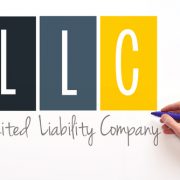Five Financial Tips for People Who Have Never Directed Their Own IRA
A Self-Directed IRA can be intimidating for those who do not have a lot of experience running their own investment strategies. But the process of getting started might not be as difficult as you thought. As long as you know the lay of the land—and some helpful tips along the way—you can establish your IRA and begin investing in alternative asset classes sooner than you might imagine. Here’s what you will need to do:
Tip 1: Choose a Self-Directed IRA Custodian with Care
In investing, it’s often about whom you choose to work with as much as it is what you invest in. Of course, a Self-Directed IRA means you will have more independence than that, but it never hurts to work with a IRA custodian or administration firm that will help make the entire process easier. Here are some things you should look for:
- Experience: Does the custodian you are considering have a lot of demonstrable experience in working with accounts of this type?
- Administrator vs. Custodian: A “custodian” is a regulated bank, whereas an administration firm has the role of processing the paperwork that allows you to establish a Self-Directed IRA. There are tighter regulations on custodians because of their ability to “custody” assets.
- Service: When you call up an administrator or a custodian, do you feel like your call is important? What does that say about the service they might provide you in the future?
Tip 2: Choose the Appropriate Account Type
Do you anticipate having a lot of income while you work, but not as much while you retire? Then the logic of a Self-Directed Roth IRA, which allows you to pay taxes upfront, is something you should be aware of. Keep in mind that a Self-Directed IRA administration firm is not there to give you advice on what types of investments you should hold. You will have to do your own homework and due diligence, and that starts with understanding the different types of Self-Directed retirement accounts and which might be best for your situation.
Tip 3: Familiarize Yourself with the Asset Classes
You know about stocks, funds, and bonds. But did you know you can invest in real estate in a Self-Directed IRA? Precious metals? Private company stock? Tax liens? Browse the different types of assets you can own within a IRA.
Tip 4: Learn Your Self-Directed IRA Limits
When many beginning investors hear about the options available in a Self-Directed IRA, their temptation is to think they will have total freedom. Not so. For example, you cannot stay in a residential investment property that you keep within a IRA, nor can any “disqualified persons,” which includes immediate family and relations.
You also cannot place some assets, such as fine art or wine, within a Self-Directed IRA. You would simply have to hold these as part of your overall private estate if you want to hedge against more traditional investments like the stock market, as the IRS would not allow these within a retirement account.
Tip 5: Get Moving
Finally, the worst thing you can do? Nothing. Retirement requires time, and if you do not make your retirement moves now, you might find that 5, 10 years roll around and you are wondering where all of your savings have gone if not toward retirement.
Interested in learning more about Self-Directed IRAs? Contact American IRA, LLC at 866-7500-IRA (472) for a free consultation. Download our free guides or visit us online at www.AmericanIRA.com.







